Table of Contents
ToggleIntroduction
Brewing beer has been a time-honored craft for centuries, but in recent years, the craft beer industry has witnessed an exponential rise in popularity. As beer enthusiasts turn their passion into a business opportunity, the demand for commercial beer brewing systems has skyrocketed. These systems allow entrepreneurs to scale up their brewing capacity, producing larger quantities of beer for distribution and sale.
What are Commercial Beer Brewing Systems?
At its core, a commercial beer brewing system is a set of equipment and machinery designed to produce beer on a larger, commercial scale. These systems vary in size and complexity, catering to different types of breweries, from small microbreweries to large industrial facilities. A well-designed commercial brewing system streamlines the brewing process, ensuring consistency in taste and quality.

The Components of a Commercial Beer Brewing System
A typical commercial beer brewing system comprises several key components that work together harmoniously to create delicious beer. Let’s take a closer look at each of them:
Mash Tun
The mash tun is where the mashing process occurs, converting starches from malted grains into fermentable sugars. It is a vessel equipped with a false bottom or a manifold system to separate the liquid wort from the solid grain husks.
Brew Kettle
The brew kettle is where the wort is boiled, and hops are added to impart bitterness, flavor, and aroma to the beer. It often comes with features like steam jackets or heating elements for precise temperature control.
Fermentation Vessels
Fermentation vessels are where yeast is added to the wort, initiating the fermentation process. These vessels come in various sizes and shapes, such as conical fermenters, open fermenters, or uni-tanks.
Cooling System
The cooling system rapidly reduces the temperature of the boiled wort after it leaves the brew kettle. Proper cooling is crucial for achieving the desired characteristics of the beer.
Control Panel
The control panel is the brain of the brewing system, managing and regulating various processes like temperature, timing, and flow rates. Advanced control panels provide automation, making brewing more efficient and consistent.
Types of Commercial Beer Brewing Systems
Commercial beer brewing systems can be broadly categorized into three main types based on the brewery’s size and production capacity:
Microbrewery Systems
Microbrewery systems are ideal for small-scale production, often found in cozy pubs or local breweries. They allow brewers to experiment with different beer styles and cater to a specific niche market.
Craft Brewery Systems
Craft brewery systems are more significant than microbrewery systems, with a higher production capacity. These systems are well-suited for brewers aiming to distribute their beer to a broader regional market.
Industrial Brewery Systems
Industrial brewery systems are the largest and most complex, capable of producing massive quantities of beer for national or international distribution. These systems often require a substantial initial investment but offer substantial scalability.
Factors to Consider When Choosing a Commercial Beer Brewing System
Selecting the right brewing system is a critical decision that can impact the success of your brewery. Here are some factors to consider:
Batch Size
The batch size determines the quantity of beer you can produce in each brewing cycle. Consider your target market and demand before finalizing the batch size.
Space and Location
Evaluate the available space and location of your brewery. Ensure that the brewing system fits comfortably and allows for future expansion.
Automation Level
The level of automation affects the brewing process’s ease and consistency. Automated systems may require higher upfront costs but can save time and labor in the long run.
Budget
Set a budget and explore options that align with your financial plan. Remember that a quality brewing system is a long-term investment.
Setting Up a Commercial Brewery: Step-by-Step Guide
Establishing a commercial brewery requires careful planning and execution. Here’s a step-by-step guide to help you navigate the process:
Research and Planning
Thoroughly research the market, understand consumer preferences, and develop a business plan outlining your brewery’s vision, target market, and financial projections.
Acquiring Licenses and Permits
Obtain the necessary licenses and permits from local, state, and federal authorities to legally operate a brewery.
Selecting the Right Equipment
Choose a commercial beer brewing system that meets your production needs, fits your budget, and aligns with your brewery’s style.
Building or Renovating Your Brewery
Create a functional and aesthetically pleasing brewery space. Ensure compliance with building codes and safety regulations.
Hiring and Training Staff
Recruit skilled brewers and staff to operate the brewing system effectively. Provide comprehensive training to maintain consistency in beer production.
Marketing and Branding
Develop a strong brand identity and marketing strategy to promote your brewery and its unique offerings. Utilize social media, events, and collaborations with local businesses to create a buzz around your brand.
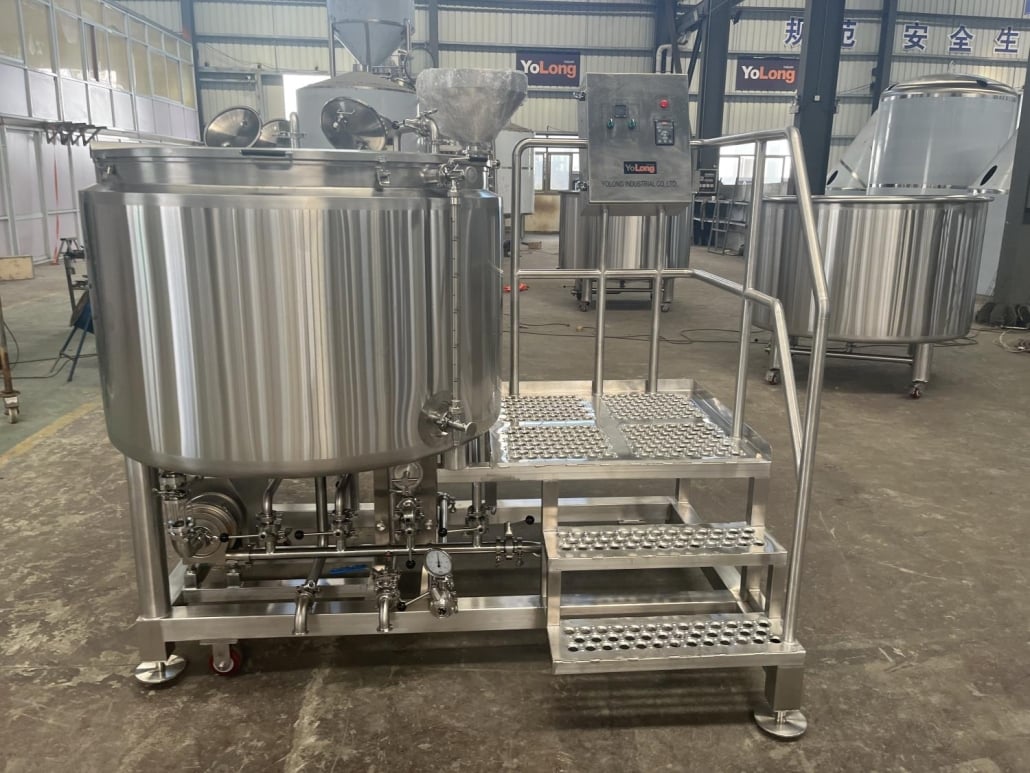
Maintenance and Cleaning of Commercial Beer Brewing Systems
Regular maintenance and cleaning of your brewing system are crucial to ensure the longevity of the equipment and the quality of your beer. Create a schedule for cleaning and upkeep, and follow best practices recommended by the equipment manufacturers.
Advantages and Challenges of Commercial Beer Brewing Systems
Advantages
- Increased Production Capacity: Commercial brewing systems allow you to produce larger quantities of beer, meeting growing demand and expanding your market reach.
- Consistency: Automated controls ensure consistency in the brewing process, leading to a reliable and uniform product.
- Scalability: As your brewery grows, commercial systems can be upgraded or expanded to accommodate higher production volumes.
- Brand Recognition: With increased production and distribution capabilities, your brand can gain recognition on a broader scale.
Challenges
- Initial Investment: Setting up a commercial brewery requires a significant upfront investment in equipment, licenses, and infrastructure.
- Competition: The craft beer industry is highly competitive, and standing out among numerous breweries can be challenging.
- Quality Control: As production scales up, maintaining the same level of quality becomes essential and may require additional resources.
- Distribution: Expanding distribution networks and reaching new markets can be a complex and costly process.
Emerging Trends in Commercial Beer Brewing Systems
As the beer industry evolves, new trends are shaping the landscape of commercial brewing systems:
Sustainable Brewing Practices
Consumers are increasingly conscious of environmental impact, leading breweries to adopt sustainable brewing practices. This includes energy-efficient equipment, water conservation measures, and using locally-sourced ingredients.
Smart Brewing Technology
Advancements in technology have given rise to smart brewing systems that integrate data analytics and automation. These systems optimize brewing processes, enhance quality control, and reduce waste.
The Future of Commercial Beer Brewing Systems
The future of commercial beer brewing systems looks promising, with continuous innovations and a growing craft beer market. Advancements in brewing technology will likely lead to more efficient and environmentally friendly systems, making craft beer more accessible globally.
Conclusion
Commercial beer brewing systems play a pivotal role in transforming passionate brewers into successful entrepreneurs. These systems offer scalability, consistency, and efficiency, enabling breweries to thrive in a competitive market. As the craft beer industry continues to evolve, embracing emerging trends and adopting sustainable practices will be key to staying ahead in this exciting and ever-changing field.
FAQs
What is the cost of a commercial beer brewing system?
The cost of a commercial beer brewing system varies significantly depending on its size, features, and brand. Microbrewery systems may start at around $100,000, while industrial systems can range from several hundred thousand to several million dollars.
Can I start a commercial brewery with a small budget?
Yes, it is possible to start a small-scale commercial brewery with a limited budget. You may consider purchasing used brewing equipment, starting with a smaller batch size, and gradually expanding as your brewery grows.
How long does it take to brew beer in a commercial system?
The brewing time in a commercial system can vary depending on the type of beer and the brewing process. Generally, it takes around 2 to 4 weeks for the entire brewing process, including fermentation and conditioning.
Is it necessary to have prior brewing experience to start a commercial brewery?
While prior brewing experience can be beneficial, it is not a strict requirement. Many successful brewery owners have started with little to no brewing experience and learned on the job or hired experienced brewers to run their operations.
Can I customize the brewing system according to my brewery’s needs?
Yes, most commercial brewing systems offer customization options to fit your specific brewing requirements and preferences. Working closely with the equipment manufacturer can help tailor the system to your brewery’s unique needs.

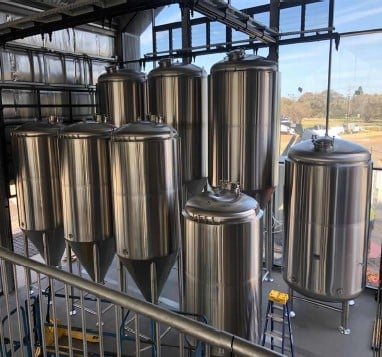
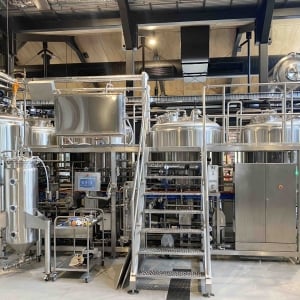
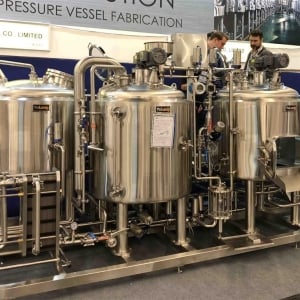
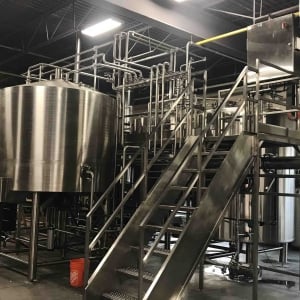
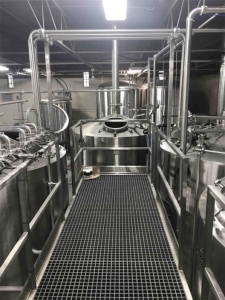
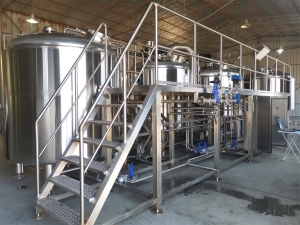

 12HL brewery setup
12HL brewery setup
